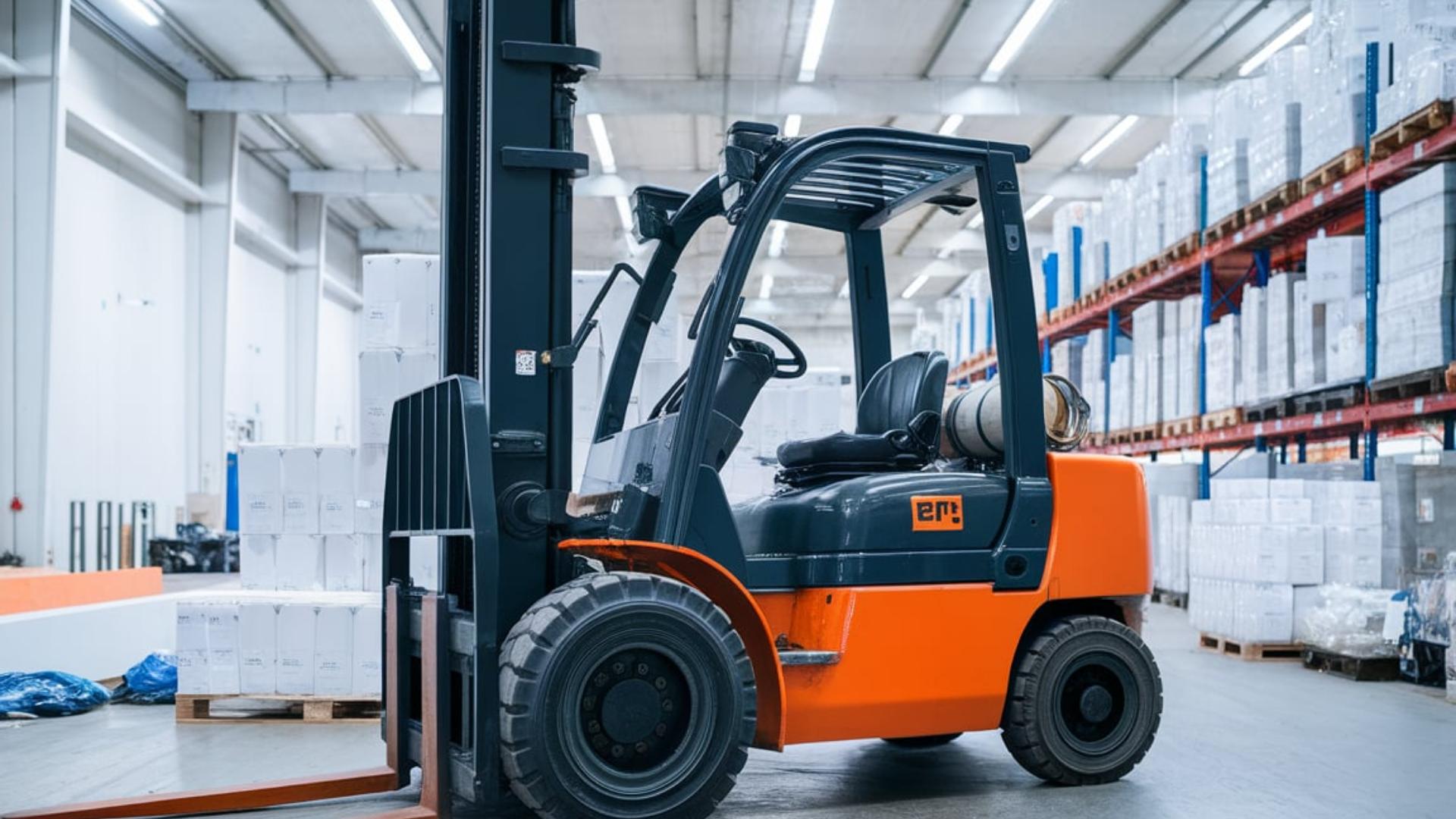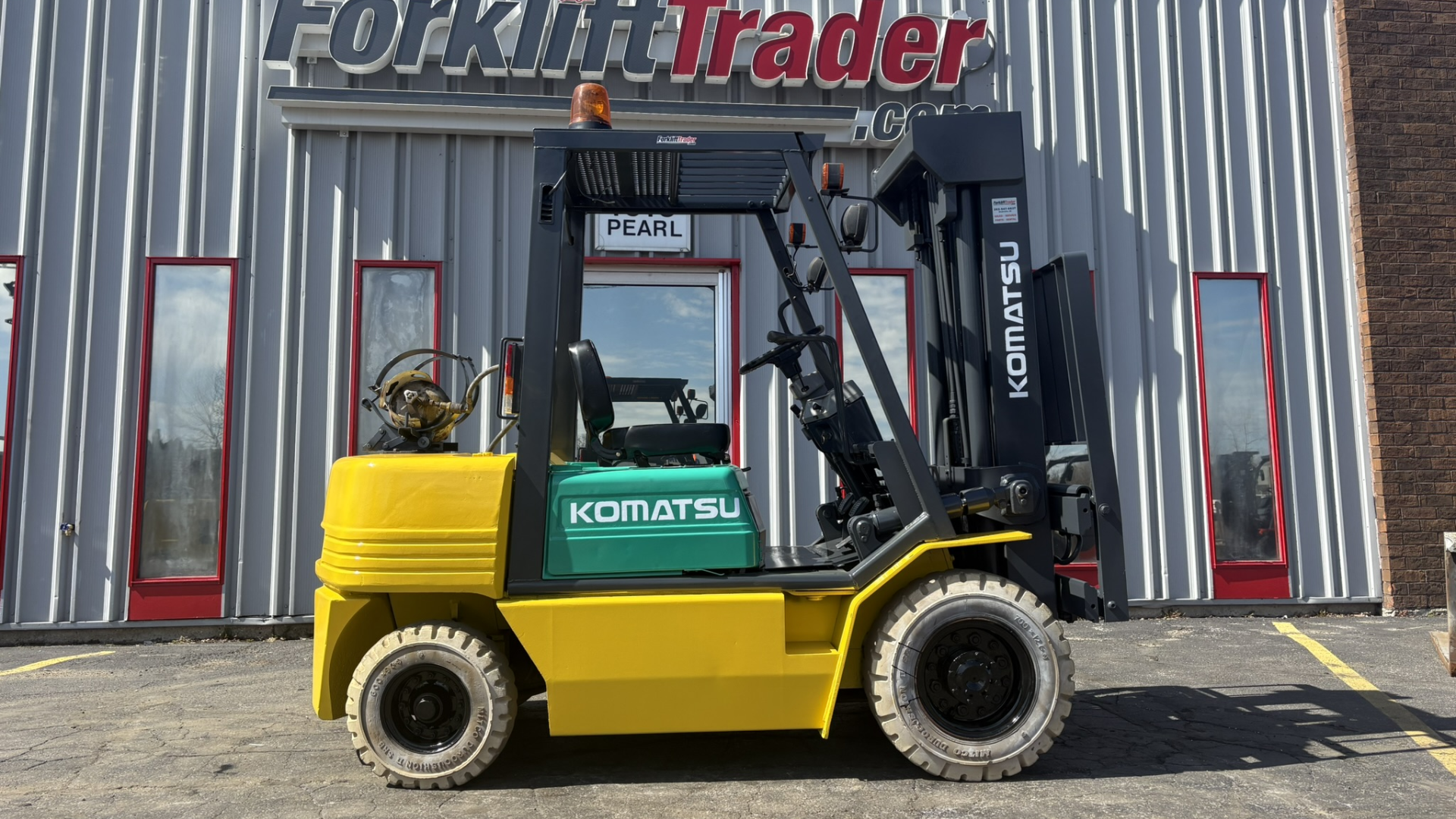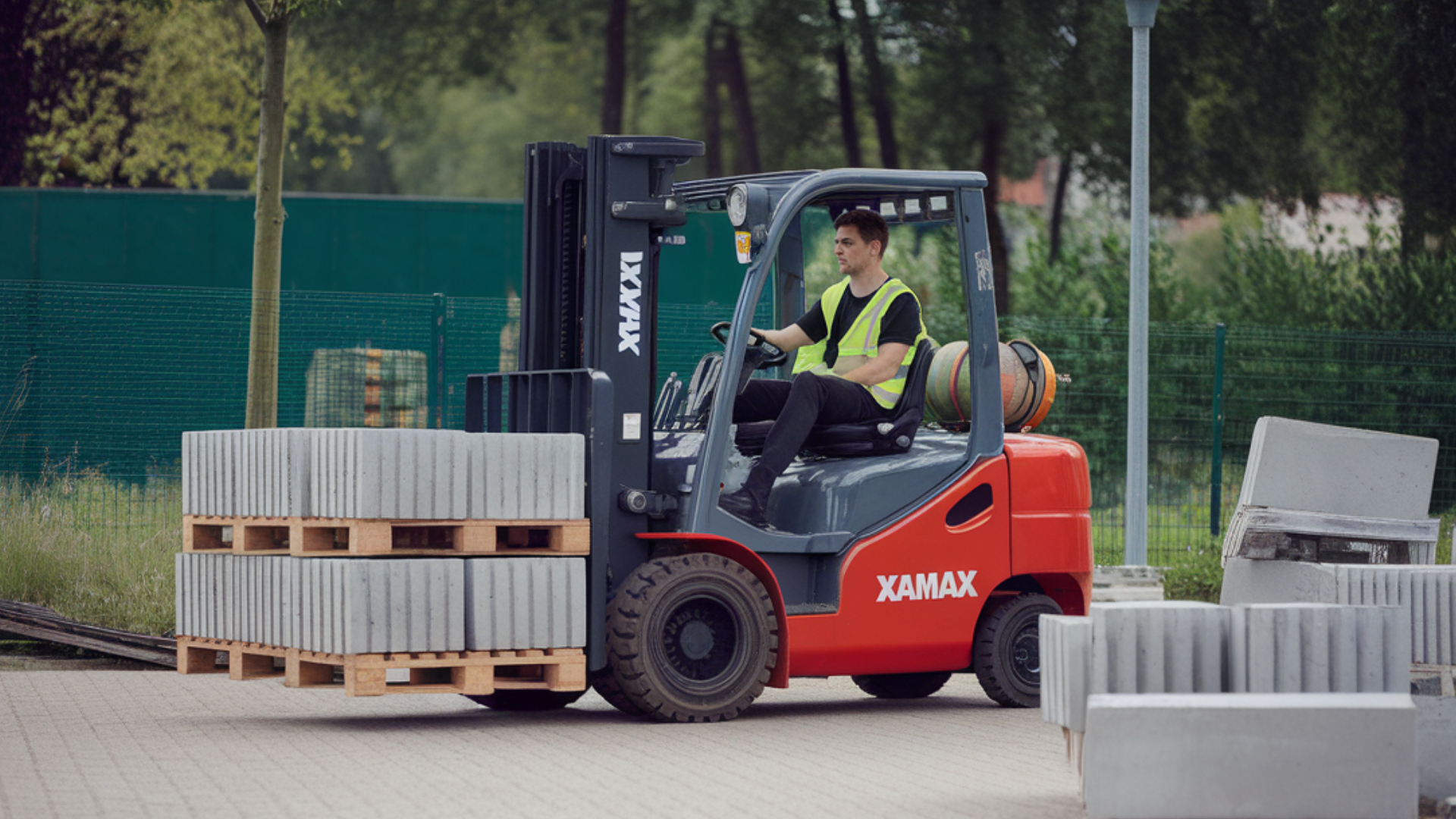When I first started working around forklifts, I was surprised by just how heavy they really are. Like many people, I assumed their weight matched their lifting capacity, but I quickly learned that wasn’t the case.
If you’ve ever asked yourself, “How much does a forklift weigh?” You might be just as surprised; the answer is often far more than expected. Forklift weight isn’t random; it’s built in for safety, balance, and stability.
You should know these numbers before moving one, and I’ve found that understanding them makes planning and operations much smoother.
So let’s take a closer look at the basics and answer the big question.
How Much Does a Forklift Weigh?
Forklifts come in different sizes, so their weight can vary a lot. Most standard warehouse forklifts weigh between 3,000 and 9,000 pounds.
The most common type, the 5,000-lb capacity forklift, usually weighs around 7,800 to 9,000 pounds, depending on the brand and setup.
If you move outdoors, rough-terrain forklifts and telehandlers are much heavier, often weighing 21,000 to 24,000 pounds.
At the top end, heavy-duty forklifts built for ports or construction sites can weigh more than 30,000 pounds.
A simple rule of thumb is that a forklift usually weighs about 1.5 to 2 times its lifting capacity. That’s why even smaller models are heavier than they look – they need the extra weight for balance and safety.
What Determines a Forklift’s Weight?

Not all forklifts weigh the same. Their design, size, and purpose all play a big role in how heavy they are.
- Counterweight: Forklifts are built with heavy counterweights to keep them stable when lifting loads.
- Power source: Electric forklifts often weigh more because of their large batteries, while gas or diesel models use engine mass.
- Lift capacity: The higher the rated capacity, the heavier the machine will be to safely balance the load.
- Tires and mast: Pneumatic tires, taller masts, and extra attachments add more weight.
- Attachments: Side-shifters, fork positioners, or clamps can increase total truck weight.
In short, a forklift’s weight isn’t random – it’s carefully designed to keep the machine stable, safe, and ready to handle the jobs it was built for.
Typical Weights by Forklift Type
Forklifts come in many styles, and each type has its own average weight. Here’s a quick look at what to expect:
| Forklift Type | Average Weight Range | Primary Use |
|---|---|---|
| Sit-down warehouse forklift | 3,000 – 9,000 lb | General indoor/outdoor lifting on pallets |
| 5,000-lb capacity forklift | 7,800 – 9,000 lb | Most common warehouse and dock work |
| Electric counterbalance | 6,000 – 9,000 lb (with battery) | Indoor use where low emissions are needed |
| Reach truck/stand-up unit | 3,000 – 6,000+ lb | Narrow aisles and high rack storage |
| Manual pallet jack | 150 – 200 lb | Moving pallets short distances manually |
| Electric pallet jack | 300 – 600+ lb | Warehouse floor transport with less effort |
| Rough-terrain / telehandler | 21,000 – 24,000 lb | Construction sites and uneven ground |
| Heavy-duty port/yard forklift | 30,000 – 40,000+ lb | Lifting oversized loads in yards or ports |
| Container handler/reach stacker | 70,000 – 100,000+ lb | Moving shipping containers in ports |
As you can see, forklift weights can range from a few hundred pounds to over 40,000 pounds, depending on the type. Knowing these averages helps when planning for transport, storage, or workplace safety.
How Heavy is a 5,000-lb Forklift?

A 5,000-lb capacity forklift is one of the most common models used in warehouses and job sites. Even though it can lift 5,000 pounds, the machine itself weighs much more.
For example, a Toyota 8FGU25 weighs about 7,840 pounds, while a Hyster H50XT comes in at around 8,910 pounds.
Electric versions in this class may list a base weight of about 6,900 pounds without the battery, but once the battery is installed, the total weight climbs closer to 8,000 pounds.
Most forklifts weigh about 1.5 to 2 times their lifting capacity. That’s why a 5,000-lb forklift usually tips the scale between 7,800 and 9,000 pounds.
How to Find Your Exact Forklift Weight
Every forklift is a little different, so it’s important to know the exact weight of the machine you’re working with.
1. Check the Data Plate
Every forklift has a metal nameplate, usually near the operator’s seat. This plate lists key details like model number, lifting capacity, and truck weight.
Look for terms like “Truck Weight,” “Service Weight,” or “Weight, Standard Truck.” This number shows how much the forklift itself weighs without a load, which is important for safety and planning.
2. Review the Manufacturer’s Spec Sheet
Most forklift brands publish spec sheets for each model online. These PDFs provide exact truck weights, including variations for different masts, tires, and attachments.
Electric forklifts may even list separate weights for “with battery” and “without battery.” Checking these sheets is the most reliable way to get accurate numbers.
3. Ask About Configurations
The actual weight can change depending on how your forklift is built. A taller mast, pneumatic tires, or extra attachments like a side-shifter will add more weight.
Electric forklifts also vary depending on the size of the battery installed. If you’re moving or transporting a forklift, always confirm its specific configuration.
Safety & Logistics: Why Forklift Weight Matters
When I first learned about the weight of forklifts, I realized their weight affects more than just lifting. It also impacts safety and how you move them around.
- Floor safety: Make sure the floor or mezzanine can handle the forklift’s weight, even when it’s not carrying a load.
- Ramps and docks: Check weight limits before driving over ramps, dock plates, or bridges.
- Elevators: Never use an elevator unless it’s rated to handle the full weight of the forklift.
- Transport needs: Heavier forklifts may need special trailers or permits for road transport.
- Worksite planning: Knowing the weight helps avoid accidents and protects equipment or structures.
I always recommend double-checking these details, because being aware of forklift weight keeps both people and property safe.
Conclusion
Forklifts may look straightforward, but their weight has a big impact on stability, transport, and floor safety.
If you’ve ever asked, “How much does a forklift weigh?” The answer depends on the model.
A 5,000-lb capacity truck often weighs closer to 8,000 or 9,000 pounds. That extra weight is intentional, giving the machine the balance it needs to lift heavy loads without tipping.
You should always check the exact truck weight on the nameplate before moving or operating one. I’ve found that knowing these details not only makes planning easier but also keeps operations safer.
For clearer and practical shipping and equipment guides, read my other blogs for advice you can actually use.
Frequently Asked Questions
What’s the heaviest type of forklift?
High-capacity forklifts designed for ports, rigging, and container handling can exceed 30,000 to 40,000 pounds in truck weight. Some container handlers and reach stackers are even heavier.
Why are electric forklifts sometimes heavier?
Electric forklifts often weigh more because of their large batteries. The battery adds significant mass, which improves stability but also affects floor load limits and transport planning.
Do forklift weights include the battery?
Not always. Some spec sheets list weights with and without the battery. Always double-check to avoid mistakes.















